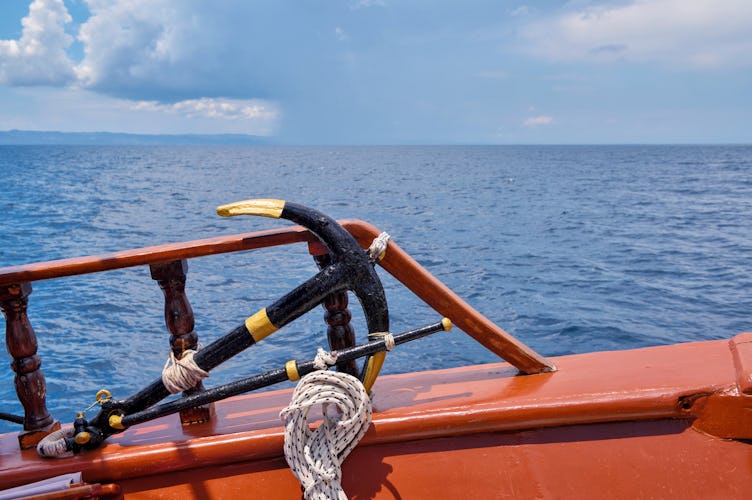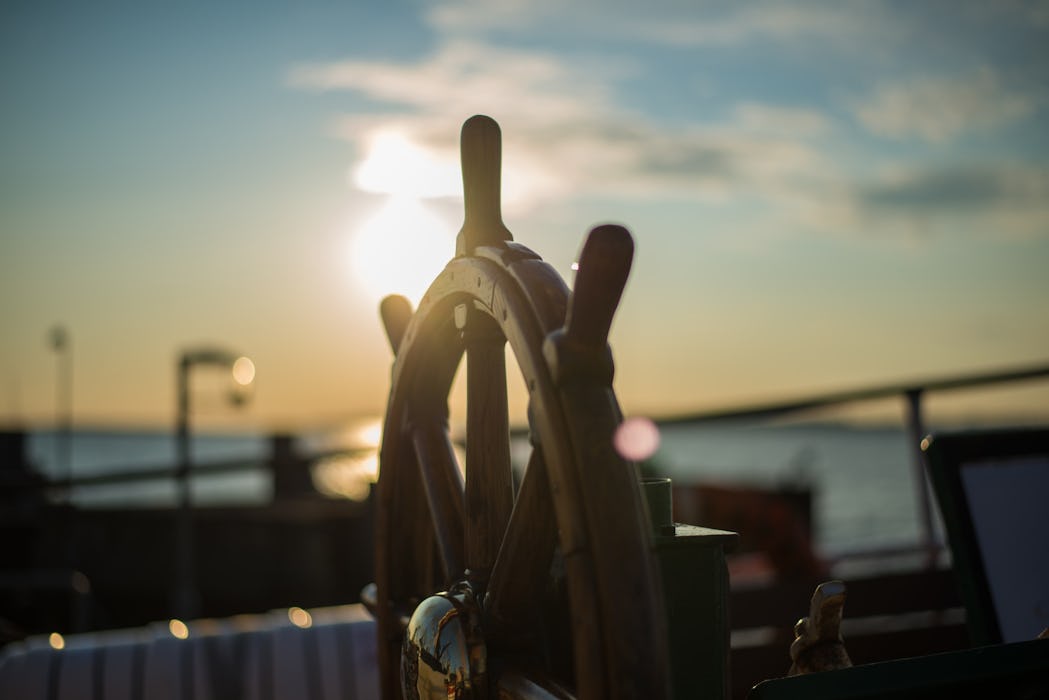Let us help you plan the perfect sailing trip
Provide your travel details, receive free offer and enjoy your holiday!
What are the sides of a ship called?
THE FRONT of the ship is called the bow, and THE BACK of the ship is called the stern.
When looking towards the bow, THE LEFT SIDE is called the port side, and the right side is called the starboard.
But to really get to know the vessel you will spend your holidays on, you should learn a little something about the parts. Here is an alphabetical ”everything you have to know about ships” guide.
A
- ANCHOR – A chain with a hook on the end that falls to the bottom of the sea and prevents your yacht from sailing off without you. Used for parking your yacht in a bay.
- ANCHORAGE – A great spot for holding, anchoring and sheltering your vessel
B
- BACKSTAY – A steel wire attached to the back of the boat
- BEAM – The width of the vessel.
- BOW – Bow of a ship is the front of a vessel. A simpler term would be the pointy end of the boat.
- BOAT – A boat is a vessel small enough to be carried by another vessel. When a boat is no more possible to be transferred by another it is called a ship.
- BOAT HOOK – A pole with a hook. You use it to grab and pick up a rope, collect something that has fallen overboard, or push the vessel off the port.
- BOOM – A horizontally set pole that holds the bottom of the sail. Not a pleasant experience having this hit you in the head.
- BURGE – A distinguishing flag to identify a recreational organisation of the vessel.
C
- CABIN – A part of the vessel below the deck where you can sleep, spend time and relax.
- COCKPIT – A place in a boat from where you (or the captain) controls the boat. It is usually an open space outside the cabin.
- CLEAT – Metal fittings you use to fasten a rope.
D
- DECK – An area of the vessel that covers the hull. The part where you spend most of the time.
- DRAFT – The difference between the lowest point of the boat and the waterline.
F
- FENDERS – Cushions made out of rubber or plastic to prevent damage to the vessel.
- FORESTAY – A steel wire attached to the bow of the boat. The other side of the backstay.
G
- GALLEY – A vessel’s kitchen.
- GRAB RAILS – Rails you should grab when feeling like you might fall off.
- GUNNEL/ GUNWALE – The rail that goes along the edge of a vessel.
H
- HATCH – An opening in the vessel’s deck with a water-resistant cover.
- HELM – A wheel or a tiller that controls the vessel. One of the most important things on a vessel!
- HULL – The shell and the main part of a vessel, the floating part.
I
- IRON MIKE – A slang name for auto-pilot
J
- JACOB’S LADDER – The type of rope ladder that you’d use to climb up something. It can be lowered from the deck when passengers come on board.
- JIB – The triangular sail at the front of the vessel.

K
- KEEL – The structural base and the lowest point of the boat's hull, the backbone of a vessel.
L
- LINE – a general term for a rope on a vessel. It is a good thing to know how to tie knots when working with the lines (ropes).
M
- MAINSAIL – The sail behind the main mast of the vessel.
- MAST – The vertically set pole that supports the sail.
- MOORING – Mooring a vessel means fastening it so it can not go adrift. It also includes all sorts of locations a vessel can be moored on such as a pier, a wharf or something else.
P
- PORT – The left side of the vessel.
- PROW – A poetical term for the front of the boat.
R
- RIGGING – The ropes and wires that control the sails and support the masts.
- RUDDER – vertical plate or a board used to steer the vessel connected to the back.
S
- SAILS – An eco-friendly engine that converts wind power into boat speed. The most important part for sailing.
- SALOON – The living area in the vessel, you can go here to relax.
- SCUPPERS – The holes in the deck that let the water drain out and control the level of the vessel.
- SEA COCK – A faucet in the hull that can be turned off when not in use.
- SHIP – A vessel predominantly used for oceangoing travels.
- SKIPPER – The most important person on the vessel, the person in charge and responsible for the safety of all men aboard.
- SPRING LINE – This is a rope that stops a boat from moving forward or backward while being fastened to a dock.
- STARBOARD – Starboard is the right side of a vessel when looking towards the front/bow
- STEM – The front of the vessel. Also known as the bow.
- STERN – The back of the vessel. The stern of the ship is the opposite of the bow.
- STERN LINE – This is a rope leading from the stern (back) of the vessel.
- SUPERSTRUCTURE – Everything above the deck.
T
- TILLER – A tiller is a bar or handle that you use to turn a vessel’s rudder to change directions.
- TOPPING LIFT – A line (rope) used to hold the boom (a horizontal pole that holds the bottom of the sail) up when the sail is lowered.
- TRANSOM – The transom is a wall at the back of a vessel.
U
- UNDERSIDE – The area of the vessel that touches the sea. The bottom of the vessel.
V
- VESSEL – A craft made for traveling on water, usually a larger boat or a ship
W
- WINCH – A rotating drum powered either by electric motor or human motion
Let us help you plan the perfect sailing trip
Provide your travel details, receive free offer and enjoy your holiday!

